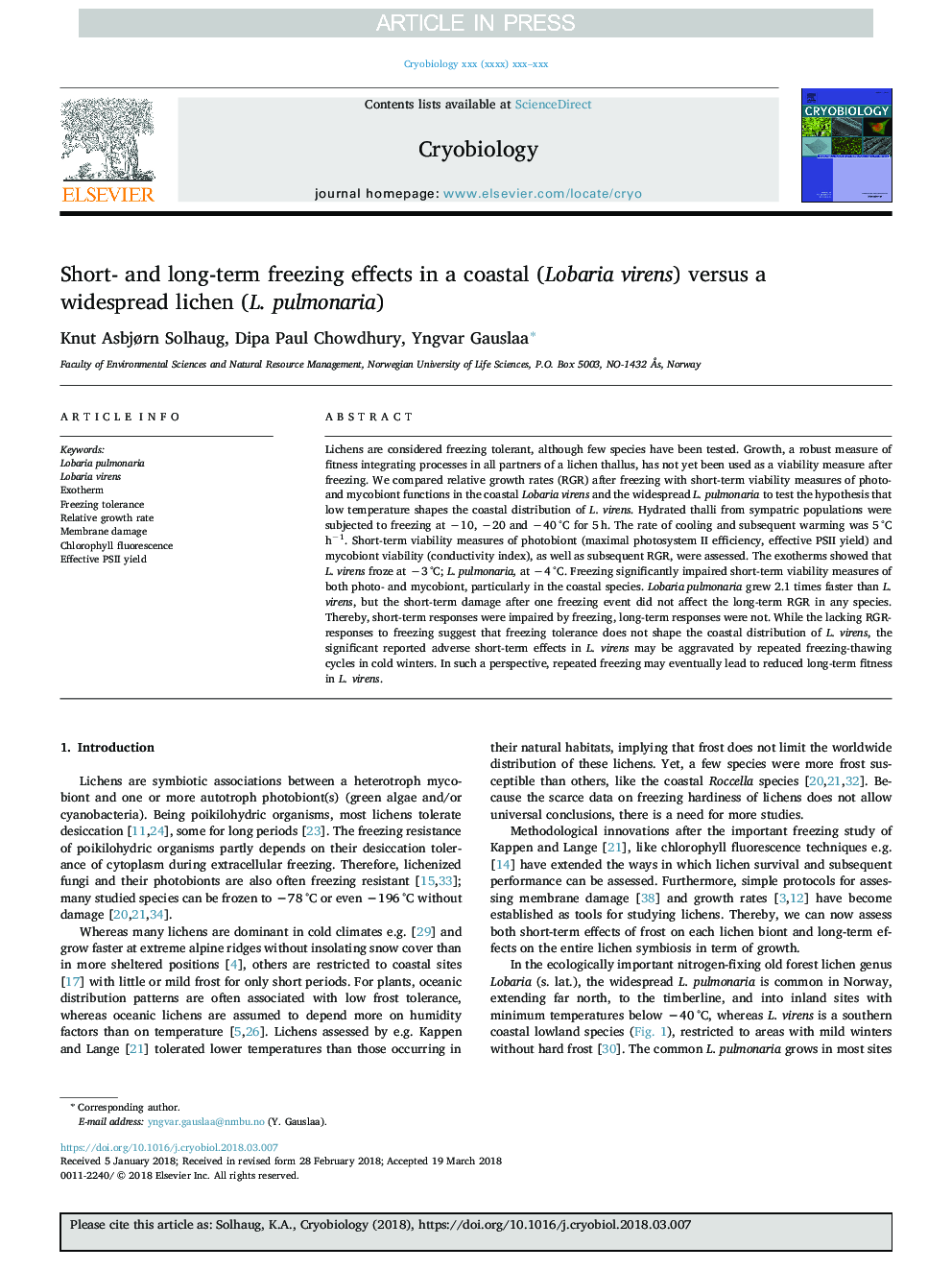| Article ID | Journal | Published Year | Pages | File Type |
|---|---|---|---|---|
| 8464106 | Cryobiology | 2018 | 6 Pages |
Abstract
Lichens are considered freezing tolerant, although few species have been tested. Growth, a robust measure of fitness integrating processes in all partners of a lichen thallus, has not yet been used as a viability measure after freezing. We compared relative growth rates (RGR) after freezing with short-term viability measures of photo- and mycobiont functions in the coastal Lobaria virens and the widespread L. pulmonaria to test the hypothesis that low temperature shapes the coastal distribution of L. virens. Hydrated thalli from sympatric populations were subjected to freezing at â10, â20 and â40â¯Â°C for 5â¯h. The rate of cooling and subsequent warming was 5â¯Â°C hâ1. Short-term viability measures of photobiont (maximal photosystem II efficiency, effective PSII yield) and mycobiont viability (conductivity index), as well as subsequent RGR, were assessed. The exotherms showed that L. virens froze at â3â¯Â°C; L. pulmonaria, at â4â¯Â°C. Freezing significantly impaired short-term viability measures of both photo- and mycobiont, particularly in the coastal species. Lobaria pulmonaria grew 2.1 times faster than L. virens, but the short-term damage after one freezing event did not affect the long-term RGR in any species. Thereby, short-term responses were impaired by freezing, long-term responses were not. While the lacking RGR-responses to freezing suggest that freezing tolerance does not shape the coastal distribution of L. virens, the significant reported adverse short-term effects in L. virens may be aggravated by repeated freezing-thawing cycles in cold winters. In such a perspective, repeated freezing may eventually lead to reduced long-term fitness in L. virens.
Keywords
Related Topics
Life Sciences
Agricultural and Biological Sciences
Agricultural and Biological Sciences (General)
Authors
Knut Asbjørn Solhaug, Dipa Paul Chowdhury, Yngvar Gauslaa,
